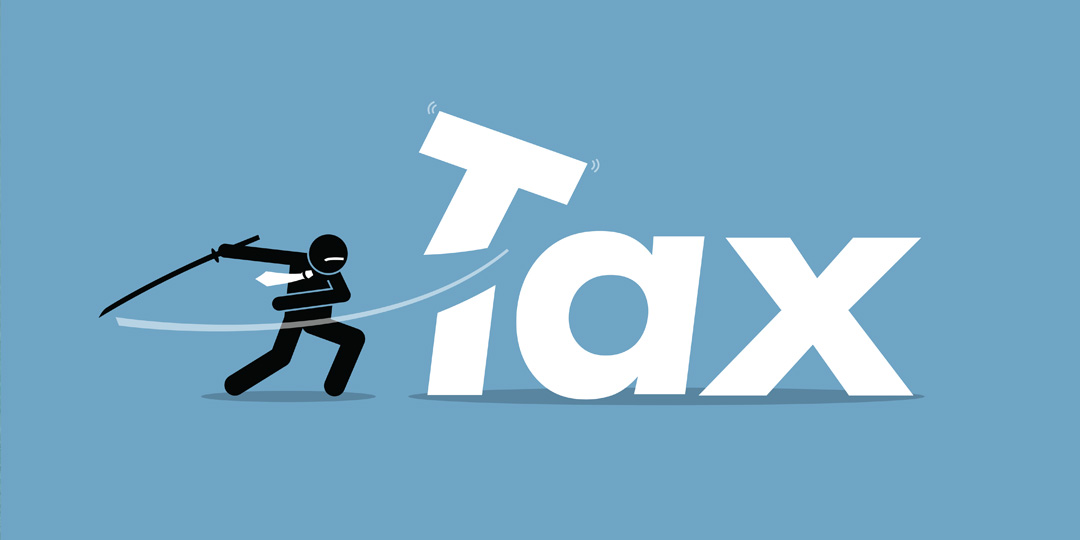6 Ways to Reduce Future Income Taxes Today
by Eric Coffman, MBA, CFP®, CKA®, AIF®

How did your 2018 income taxes turn out? New tax regulations went into effect that helped some and hindered others. Many were pleased with additional take-home pay and simplified income tax prep. Others, however, lost valuable deductions that made it impractical to itemize.
Now that you’ve experienced a year under the new tax regs you may be interested in fine-tuning your income tax planning for 2019. Here are six tax-savvy steps you can take to reduce your future income taxes.
Expense Bunching (or Clumping).
For 2018, the standard deductions were increased to $12,000 for individual filers and $24,000 for joint filers. This led to the decision by many, especially those with a small or no mortgage, to use the standard deduction rather than itemizing their deductions.
Should one automatically accept that using the standard deduction is the simple, easy way going forward? Not so fast. A strategy called bunching is worth consideration, says Sharon Nagy, CPA, of Davis Nagy in Copley. “You may prepay 2020 charitable contributions and real estate taxes in the current year to boost your total itemized deductions to a level that would exceed the standard deduction. It may work out that you itemize this year and use the standard deduction next year.”
Let’s review a hypothetical example of how bunching works. In 2019, a couple expects to make $8,000 in charitable contributions, pay $6,000 in mortgage interest and $7,000 in real estate taxes. This adds up to $21,000 in deductions – a number that falls below the $24,000 standard deduction threshold.
However, if they choose to prepay half of next year’s real estate taxes ($3,500) and all of next year’s charitable donations ($8,000), their 2019 itemized deductions increase to $32,500. Thus, by using the bunching strategy, they will benefit from an additional $8,500 in tax deductions this year thus surpassing the standard deduction. They may decide to use the standard deduction in 2020 and use the bunching strategy in 2021. Doing so will allow them to maximize the use of itemized deductions under the current tax regs.
Note that mortgage interest is capped on $750,000 in indebtedness and the cumulative deduction for State and Local Tax (a.k.a. SALT) is capped at $10,000.
Asset Positioning.
Certain types of investments tend to wreak havoc with your income taxes. These investments come in several categories:
- Investments that produce taxable interest: CDs, corporate and government bonds (not municipal), mutual funds that invest in taxable bonds.
- Dividend paying stocks and mutual funds.
- Investments that produce realized capital gains and capital gains dividends like actively managed investment accounts and mutual funds.
These investments are best held in tax-free accounts (Roth IRA/Roth 401k/403b) and tax-deferred accounts (IRAs, 401k/403b/457 plans, annuities).
You may consider owning the following types of investments in your non-retirement accounts:
- Tax-free municipal bonds and municipal bond funds
- Individual stocks that do not regularly pay dividends
- Exchange traded funds and index funds
An implication for the strategically allocated portfolio, especially for those who are retired or near retirement, is that non-retirement portfolios would now be more heavily invested in stocks whereas the retirement accounts would now be more heavily invested in bonds. In our experience, efficient asset positioning can add between 2- and 6-years to your retirement income stream.
Tax-Loss Harvesting.
When you sell an investment for a gain, it’s a good thing…you made money! However, the IRS will want a portion of that gain consequently you will owe taxes. When you sell an investment for a loss, it’s not a good thing unless you are purposely doing so by using a strategy known as tax-loss harvesting.
Tax-loss harvesting allows you to use the loss created by selling one investment to offset the gain created by selling another investment. You may then purchase investments similar to the ones you sold so that your asset investment design remains intact.
In our experience, an approach using tax loss harvesting, strategic asset positioning and tax-sensitive investments such as ETFs, can combine to add between 1 to 2% return per year.
Maximize Your Pre-tax Retirement Plan Contributions.
One of the most effective strategies to lower your taxable income is maxing out your 401k/403b/457b pre-tax contributions. In 2019, you may contribute up to $19,000 from your earned income into a qualified retirement account. If you are 50 and older you may contribute an additional $6,000 bringing your total to $25,000.
Note that 457b plans, frequently available to medical professionals, occasionally have a special catch-up feature that allow one to exceed the normal contribution limit. This feature allows you to “make-up” for pre-tax contributions you didn’t max out earlier in your career. Combining a special catch-up contribution with a 403b contribution can result in a substantial reduction in taxable income.
Small business owners may establish defined benefit plans into which they may make much larger pre-tax contributions to lower their taxable income.
Qualified Charitable Distributions.
Eventually the IRS gets its hands on our non-Roth retirement money. Starting at 70 ½, we are required to take withdrawals from our retirement accounts. The details of this event, affectionately known as an RMD (required minimum distribution) are left for another article. For now, however, know that RMDs create taxable income that may be very substantial given the large amount that many folks have accumulated in their retirement savings.
A strategy, known as a Qualified Charitable Distribution (QCD), allows you to send the RMD money directly to a charity thereby saving income tax. Most people make charitable donations by writing a check from cash. With the QCD, some of this giving will take place from your retirement accounts rather than your checking account. Note that you are not entitled to a charitable deduction for the amount of the QCD. QCDs, then, offer two powerful benefits: income tax savings and the ability to help others.
Donor Advised Funds.
Earlier I referred to the strategy of prepaying future charitable contributions to bunch current year tax deductions. A convenient way to do this is by using a donor advised fund (DAF).
A DAF is an account that is established as a charity. It allows donors to make a charitable contribution, receive an immediate tax deduction and then recommend grants over time. You may contribute cash or shares of investments such as mutual funds or stocks. While you are waiting to make grants, the value of the contribution is invested in mutual fund type investments. You may determine how conservative or aggressive the money will be invested via a menu of different investment options.
A tax-savvy strategy is to donate shares of an investment, let’s say a stock, that has a cost basis much lower than its current value. Were you to sell the stock, you’d realize a taxable capital gain. By donating the stock to the DAF and letting it sell the shares, you receive a charitable deduction for the value of the stock and avoid having to potentially pay capital gains tax in the future.
If you are considering bunching your deductions in 2019, why not donate shares of a low-basis investment today to create a large charitable deduction? Your Wealth Impact advisor can help you establish a DAF.
We’ve covered various advanced strategies have in this article. Some of these can work together to create a substantially positive impact on your current and future financial situation. We’ve scratched the surface on these strategies in order to introduce them to you. We encourage you to contact your Wealth Impact Advisor and your tax professional to further explore how these strategies may be used for the benefit of you, your family and the community.

ERIC COFFMAN
MBA, CFP®, CKA®, AIF®
Wealth Impact Advisors
Email Eric
Phone: 330.865.3545 ext.126
www.teamwia.com/ERIC
Disclosures:
The material contained herein is for informational purpose only and is not intended to provide specific advice or recommendations for any individual nor does it take into account the particular investment objectives, financial situation or needs of individual investors. Any tax advice contained herein is of a general nature and is not intended for public dissemination. Further, you should seek specific tax advice from your tax professional before pursuing any idea contemplated herein. This advice is being provided solely as an incidental service to our business as insurance professionals and investment advisors.
Neither Wealth Impact Advisors, Valmark Securities nor its affiliates and/or its employees/agents/registered representatives offer legal or tax advice. Please seek independent advice, specific to your situation, from a qualified legal/tax professional.
Securities offered through Valmark Securities, Inc. Member FINRA/SIPC. Investment advisory services offered through Valmark Advisers, Inc., a SEC Registered Investment Advisor. 130 Springside Drive, Suite 300 Akron, Ohio 44333. (800) 765-5201. Wealth Impact Advisors is a separate entity from Valmark Securities, Inc. and Valmark Advisers, Inc.

